PSILOCYBE BAECOYSTIS
$150.00 – $1,100.00Price range: $150.00 through $1,100.00
Psilocybe baeocystis is part of the Psilocybe genus, a group of mushrooms known for their active compounds, psilocybin and psilocin, which are responsible for their mind-expanding effects.
Buy Psilocybe Baeocystis Dried Mushrooms
– A Gateway to Profound Psychedelic Experiences
Psilocybe baeocystis, commonly known as “Knobby Tops” or “Bottle Caps,” is a rare and potent species of psychedelic mushrooms. Celebrated for its unique effects and deep spiritual potential, Psilocybe baeocystis has become a favorite among seasoned psychonauts and those seeking meaningful introspection. In its dried form, this strain offers enhanced potency, extended shelf life, and convenience, making it an excellent choice for personal exploration or therapeutic use.
If you’re looking for a mushroom that combines potency, rich history, and profound effects, Psilocybe baeocystis dried mushrooms are a must-try.
What Are Psilocybe Baeocystis Mushrooms?
Psilocybe baeocystis is part of the Psilocybe genus, a group of mushrooms known for their active compounds, psilocybin and psilocin, which are responsible for their mind-expanding effects. First discovered in the Pacific Northwest, this mushroom thrives in cool, damp environments and is often found near decomposing wood, grass, and bark mulch.
Psilocybe baeocystis stands out due to its high psilocybin content, which often rivals or exceeds more commonly known strains like Psilocybe cubensis. When dried, these mushrooms offer an even more concentrated dose of their active compounds, making them a powerful tool for those ready to dive into deep psychedelic journeys.
Appearance of Dried Psilocybe Baeocystis
Dried Psilocybe baeocystis mushrooms retain the distinct characteristics of their fresh counterparts.
- Cap: The caps are small to medium-sized, with a wavy, knobby texture. They appear dark brown or golden, often with bluish bruising around the edges—a telltale sign of psilocybin presence.
- Stem: The stems are slender and elongated, typically lighter in color than the caps but still showing blue bruising when handled.
- Texture: Once dried, the mushrooms are lightweight and brittle, making them easy to grind, store, or consume directly.
Aroma and Flavor
Dried Psilocybe baeocystis has a subtle earthy aroma, with hints of forest floor and woody undertones. The flavor is mild, with an earthy and slightly nutty taste that’s characteristic of most psychedelic mushrooms. While the flavor is not the primary reason for consuming Psilocybe baeocystis, its manageable taste makes it easier to incorporate into teas or other preparations.
Potency and Effects
Psilocybe baeocystis is recognized for its exceptional potency, with psilocybin and psilocin levels that can induce profound and transformative experiences. Its dried form further amplifies this potency, making it a strain better suited for experienced users or those seeking deeply introspective journeys.
Psilocybe Baeocystis Effects
The effects of Psilocybe baeocystis are diverse and depend on the dose consumed.
- Visual Effects:
- Vivid, colorful patterns and geometric visuals.
- Heightened perception of light and movement.
- Emotional and Cognitive Changes:
- Intense emotional introspection, often leading to feelings of connection and empathy.
- A sense of euphoria and spiritual awakening.
- Altered Perception of Reality:
- Enhanced creativity and abstract thinking.
- A deep sense of unity with nature and the universe.
- Physical Sensations:
- Tingling or warm sensations throughout the body.
- Relaxation and a sense of grounding.
Dosing Guidelines for Dried Psilocybe Baeocystis
Given its potency, accurate dosing is crucial when consuming dried Psilocybe baeocystis:
- Microdose (0.1–0.3 grams): Provides subtle enhancements in focus, creativity, and mood without hallucinations. Ideal for beginners or those seeking therapeutic benefits.
- Low Dose (0.5–1 gram): Produces mild psychedelic effects, including light visuals and enhanced sensory perception.
- Moderate Dose (1.5–2.5 grams): A more immersive experience with vivid visuals, emotional depth, and introspection.
- High Dose (3+ grams): An intense psychedelic journey that includes profound visual effects, ego dissolution, and deep spiritual exploration. Recommended only for experienced users in a controlled environment.
How to Consume Dried Magic Mushrooms With Baeocystin
- Direct Consumption:
Chewing and swallowing dried mushrooms is the most straightforward method. Be sure to chew thoroughly to aid digestion and absorption. - Psilocybin Tea:
- Grind the dried mushrooms into a fine powder.
- Steep the powder in hot (not boiling) water with a splash of lemon juice for 15 minutes.
- Strain and enjoy a soothing, fast-acting brew.
- Capsules:
For precise dosing, grind the mushrooms and encapsulate them. This method is discreet and eliminates the taste. - Edibles:
Incorporate the powdered mushrooms into recipes like smoothies, chocolates, or honey for a more enjoyable consumption experience.
Therapeutic and Spiritual Benefits
Psilocybin mushrooms, including Psilocybe baeocystis, have been studied for their therapeutic potential and ability to promote spiritual growth.
Therapeutic Uses
- Mental Health: Psilocybin has shown promise in reducing symptoms of anxiety, depression, and PTSD by promoting neuroplasticity and emotional processing.
- Addiction Recovery: Many users report breakthroughs in overcoming substance abuse through psilocybin experiences.
- Stress Relief: The calming effects can help alleviate chronic stress and promote a sense of well-being.
Spiritual Exploration
Psilocybe baeocystis has long been used in spiritual rituals and ceremonies. Its effects can:
- Enhance self-awareness and foster personal growth.
- Promote feelings of interconnectedness with the universe.
- Facilitate transformative insights that lead to life-changing realizations.
Tips for Safe and Responsible Use
- Set and Setting: Ensure you are in a safe, comfortable environment and have a positive mindset.
- Have a Trip Sitter: For higher doses, having a trusted, sober individual present can provide reassurance.
- Stay Hydrated: Drink water or herbal tea throughout your experience.
- Avoid Mixing Substances: Do not combine psilocybin mushrooms with alcohol or other drugs.
- Integration: Reflect on your experience through journaling or discussions to fully benefit from the insights gained.
Storage Tips for Dried Psilocybe Baeocystis
Proper storage is essential to maintaining the potency and quality of dried Psilocybe baeocystis:
- Use Airtight Containers: Protect against air exposure and moisture.
- Store in a Cool, Dark Place: Avoid direct sunlight and high temperatures.
- Add Desiccants: Use silica gel packets to keep the mushrooms dry.
When stored correctly, dried Psilocybe baeocystis can retain its potency for months or even years.
Why Choose Our Dried Psilocybe Baeocystis?
At [https://buydankvapescartsnow.net], we are dedicated to providing premium-quality psychedelic mushrooms that meet the highest standards.
- Authenticity: Our Dried Mushroom is sourced responsibly and verified for quality.
- Potency: Each batch is carefully dried to preserve its psilocybin content.
- Safe Packaging: Delivered in discreet, moisture-proof containers to ensure freshness.
- Expert Guidance: We provide resources and support to help you have a safe and meaningful experience.
Order Dried Mushrooms Today
Unlock the transformative power of Psilocybe baeocystis dried mushrooms. Whether you’re a seasoned explorer or new to psychedelics, this strain offers a unique opportunity for deep introspection, healing, and spiritual growth.

| quantity | oz, qp, hp, p |
|---|
2 reviews for PSILOCYBE BAECOYSTIS
Add a review Cancel reply
Related products
Dank Vapes & Carts
Dank Vapes & Carts
Dank Vapes & Carts
Dank Vapes & Carts
Dank Vapes & Carts
Dank Vapes & Carts
Dank Vapes & Carts


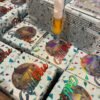
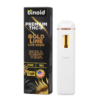
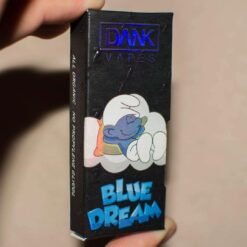
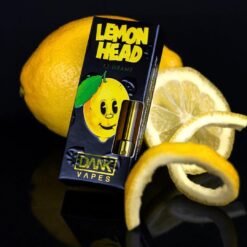
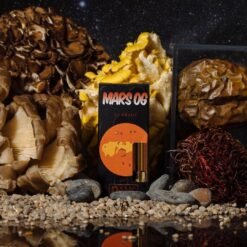

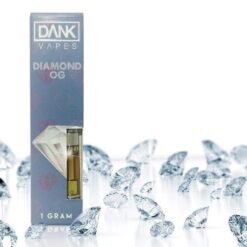
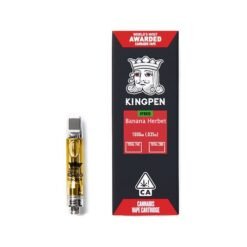


Lenny H –
Took a small dose to start—very introspective experience with gentle visuals and a strong body high. Psilocybe baeocystis is underrated but powerful.
Theo V. –
Much stronger than I expected from such a small amount. Deep, meditative trip with lots of mental clarity afterward. Definitely not for first-timers definitely coming for more